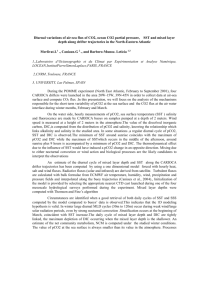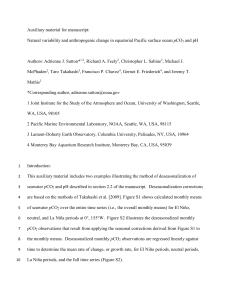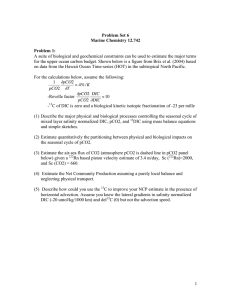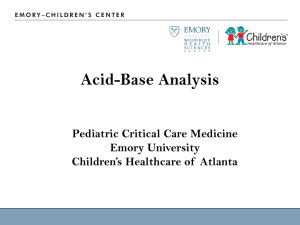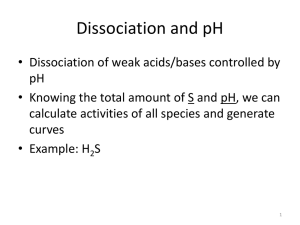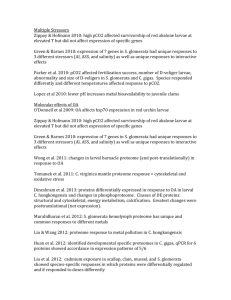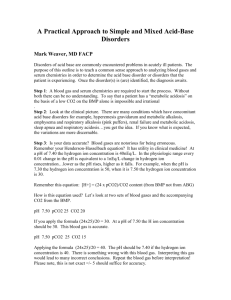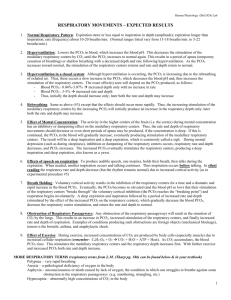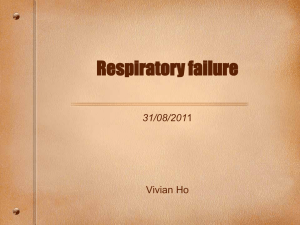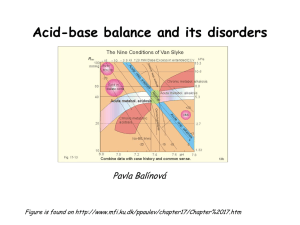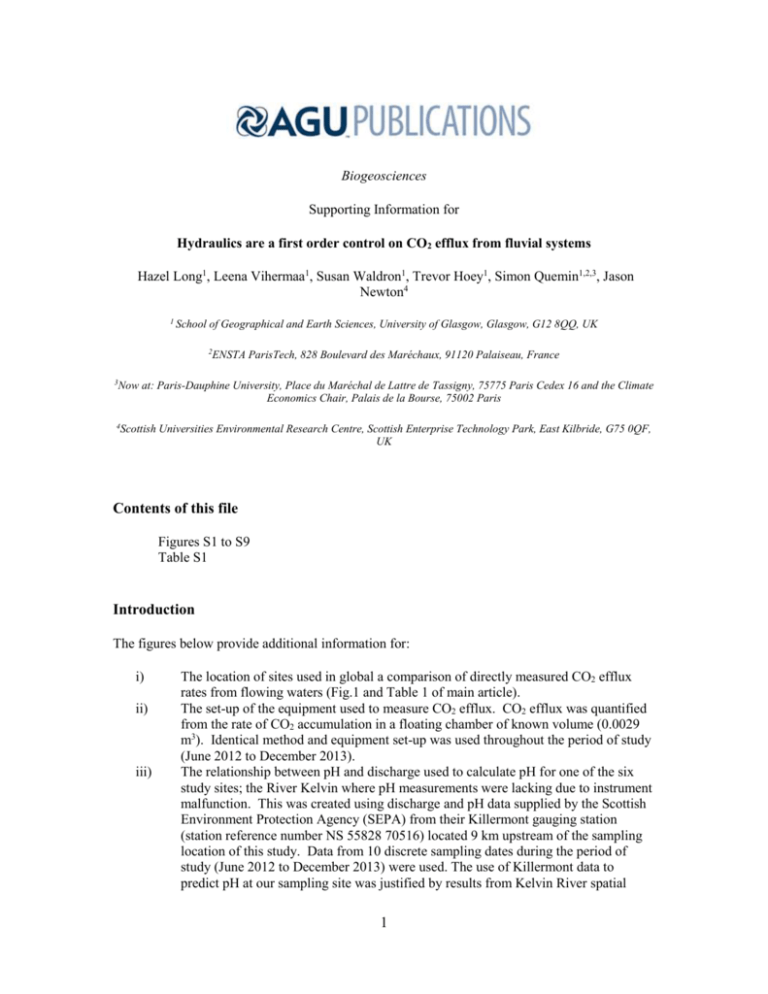
Biogeosciences
Supporting Information for
Hydraulics are a first order control on CO2 efflux from fluvial systems
Hazel Long1, Leena Vihermaa1, Susan Waldron1, Trevor Hoey1, Simon Quemin1,2,3, Jason
Newton4
1 School
of Geographical and Earth Sciences, University of Glasgow, Glasgow, G12 8QQ, UK
2ENSTA
3Now
ParisTech, 828 Boulevard des Maréchaux, 91120 Palaiseau, France
at: Paris-Dauphine University, Place du Maréchal de Lattre de Tassigny, 75775 Paris Cedex 16 and the Climate
Economics Chair, Palais de la Bourse, 75002 Paris
4Scottish
Universities Environmental Research Centre, Scottish Enterprise Technology Park, East Kilbride, G75 0QF,
UK
Contents of this file
Figures S1 to S9
Table S1
Introduction
The figures below provide additional information for:
i)
ii)
iii)
The location of sites used in global a comparison of directly measured CO2 efflux
rates from flowing waters (Fig.1 and Table 1 of main article).
The set-up of the equipment used to measure CO2 efflux. CO2 efflux was quantified
from the rate of CO2 accumulation in a floating chamber of known volume (0.0029
m3). Identical method and equipment set-up was used throughout the period of study
(June 2012 to December 2013).
The relationship between pH and discharge used to calculate pH for one of the six
study sites; the River Kelvin where pH measurements were lacking due to instrument
malfunction. This was created using discharge and pH data supplied by the Scottish
Environment Protection Agency (SEPA) from their Killermont gauging station
(station reference number NS 55828 70516) located 9 km upstream of the sampling
location of this study. Data from 10 discrete sampling dates during the period of
study (June 2012 to December 2013) were used. The use of Killermont data to
predict pH at our sampling site was justified by results from Kelvin River spatial
1
iv)
v)
vi)
vii)
sampling that showed close agreement both in pH and conductivity between these
sampling points.
Estimating the uncertainty in pCO2 resulting from the quantification of the DIC pool
([DIC]) and the measurement of pH.
The distribution of the residuals from the multiple regression model (Eq. 3 main
article) and the relationship between the linear regression and linear mixed effect
model predictions and measured CO2 efflux (Eq. 3 and 4 main article). This analysis
was carried out using R statistical package version 3.1.0.
The relationship between CO2 efflux and the product of flow velocity and pCO2. By
including the influence of pCO2, NC falls in line with the other five study sites
whether or not the axes are not log transformed
The visual classification of water surface state.
Figure S1: Locations of sites coded in Fig. 1 and Table 1. Site labels were added to a World
Topo Map which was created using ArcGIS® software by Esri. ArcGIS® and ArcMap™ are the
intellectual property of Esri and are used herein under license. Copyright © Esri. All rights
reserved. For more information about Esri® software, please visit www.esri.com.
2
Figure S2. Schematic diagram (not to scale) of the closed-loop floating chamber system. Pump
(Schego Optimal) is to ensure internal air circulation. Arrows show direction of air flow. Filter is
in place to protect LI-COR from water/particles that may enter the tubing. Clamps are to
maintain the circulating airflow at speed 0.3 – 1.0 L min-1.
a)
b)
c)
Contains SEPA data © Scottish Environment Protection Agency and database right
[2015]. All rights reserved.
Figure S3. a) The relationship between discharge and pH (n=10) observed at the SEPA
Killermont monitoring station, used to calculate pH for the River Kelvin. b-c) Kelvin spatial
sampling data (Hemanth Pasumarthi unpublished data) showing good agreement in pH (n=3) and
conducticity (n=7, μS/cm) between the SEPA sampling point at Killermont and our sampling
point in Kelvingrove park. Dotted line is the best fit regression line and solid line the 1:1 line. In
conductivity data one outlying value (marked in grey) was observed in January 2014 and the
regression was fitted excluding this value.
3
Estimating Uncertainty in pCO2:
The two measurement components that influence pCO2 calculation the most are the quantification
of the DIC pool, and the measurement of pH that is used in calculating the proportion of the pool
that is free CO2 [e.g. Abril et al., 2015]. As the systems were both calibrated with standards
purchased externally, or made gravimetrically and used across multiple other systems, accuracy is
assumed to be acceptable and not inducing error that needs to be considered here.
Here pH is precise to ± 0.1 pH units (the manufacturers specification for the Troll 9000 and
9500) and DIC to ± 0.027 mM (the mean worst case scenario generated using statistically
rigorous inverse confidence interval calibrations and so conservative; the error quantification
approach is reported extensively in Waldron et al., 2014). For River Kelvin pH calculations, the
% residuals indicated uncertainty of 1.3% (Fig. S3).
We propagated these uncertainties in our pCO2 calculations. Table S1 summaries for each site
the percentage uncertainty in pCO2 that arises for these individual components as well as the total
error arising from both sources. There are two values associated with uncertainty from pH as DIC
equilibrium renders this asymmetrical dependent on the sample field pH. The total uncertainty for
each pCO2 estimate is shown in figure S4.
Our error propagation suggests there is on average 14.4 – 32.8% total uncertainty in our pCO2
values (Table S1 and Fig. S4). This may have been greater if we had calculated [DIC] from total
alkalinity (TA) than from sample acidification and headspace analysis [Raymond et al., 1997;
Waldron et al 2014; Aberg and Wallin, 2014]. Indeed pH/[DIC] calculation of pCO2 has been
used as a method of correcting errors arising from alkalinity titrations [Hunt et al., 2011].
Table S1: Uncertainty in pCO2 values that arises with the measurement capacity precision.
% uncertainty in pCO2
DIC
pH +0.1
pH -0.1
Mean total %
Site
mean
range
mean
range
mean
range
plus minus
New Colpita
6.9 3.5 to 16.0 12.4 8.7 to 16.0 -12.6 -8.2 to -17.7 14.4 14.6
Main Trail
32.7 18.0 to 52.6 1.2 -0.2 to 1.7 -1.1 -0.4 to -2.2 32.8 32.8
La Torre
12.4 5.9 to 35.9 14.7 2.3 to 19.2 -16.4 -1.9 to 23.2 20.2 21.7
Tambopata
11.0 6.8 to 19.3 17.1 12.0 to 19.4 -19.7 -12.1 to -23.6 20.5 22.7
Drumtee Water 12.8 1.9 to 40.8 15.3 2.3 to 20.3 -17.7 -1.9 to -25.1 22.4 24.7
Kelvin River
2.2 1.2 to 5.6 20.4 18.3 to 20.9 -25.3 -21.8 to -26.2 20.6 25.5
4
Figure S4: pCO2 data for all UK (DW, RK) and Amazonian sites (NC, MT, LT, TP). The error
bars show the total uncertainties in the pCO2 estimates arising from the pH and DIC
measurements. One-way ANOVA shows NC is statistically different in pCO2 from the other
sites at p = <0.001.
5
Figure S5. Residuals from multiple regression model (Eq. 3). These are close to normally
distributed and are random with respect to the fitted values. Analysis carried out using R
statistical package version 3.1.0.
Figure S6. Results from the regression models. a) Linear regression (Eq. 3) predictions plotted
against measured CO2 efflux; concordance correlation coefficient (ccc) for the relationship was
0.80. b) Linear mixed effect model (Eq. 4) predictions plotted against measured CO2 efflux, ccc =
0.88. R2 was calculated using the furnival function for the fixed effects of flow and pCO2 only
and including the site specific random effects on the intercept listed on the bottom right. Analysis
carried out using R statistical package version 3.1.0.
Figure S7: Data from all UK (RK, DW) and Amazonian sites (MT, NC, LT, TP) demonstrating a
relationship between CO2 efflux and the product of flow velocity and pCO2. By including the
6
influence of pCO2, NC falls in line with the rest of the study sites whether the axes are not log
transformed (as here) or are log transformed (see Fig. 4 main article).
Figure S8. Water surfaces classified as ‘smooth’ separate by Froude number from those
classified as ‘medium’ and ‘rough’. Boxes represent interquartile range with the hozontal line as
the median, upper and lower whiskers represent maximum and minimum values respectively.
One-way ANOVA, with smooth, medium and rough categories, confirmed that the differences
between classes are significant (F = 48.8; p<0.001). Means of each of the three pairs of classes
(smooth-medium; smooth-rough; medium-rough) are also significantly different (t-tests; p<0.001
in all cases).
7
Figure S9. Photographic examples of water surface state classifications – Water surface
highlighted with yellow oval. A) Smooth = a flat water surface; B) Medium = ripples, with no
white water; C) Rough = ripples with white water.
8
REFERENCES:
Åberg, J., and M. B. Wallin (2014), Evaluating a fast headspace method for measuring DIC and
subsequent calculation of pCO2 in freshwater systems, Inland Waters, 4, 157–166,
doi: 10.5268/IW-4.2.694
Abril, G., J-M. Martinez, L. F. Artigas, P. Moreira-Turcq, M. F. Benedetti, L. Vidal, T. Meziane,
J-H. Kim, M. C. Bernardes, N. Savoye, J. Deborde, E. L. Souza, P. Albéric, M. F. Landim de
Souza, and F. Roland (2014), Amazon River carbon dioxide outgassing fuelled by wetlands,
Nature, 505, 395-398, doi:10.1038/nature12797.Abril, G., S. Bouillon, F. Darchambeau, C. R.
Teodoru, T. R. Marwick, F. Tamooh, F. Ochieng Omengo, N. Geeraert, L. Deirmendjian, P.
Polsenaere, and A. V. Borges (2015), Technical Note: Large overestimation of pCO2 calculated
from pH and alkalinity in acidic, organic-rich freshwaters, Biogeosciences, 12, 67-78,
doi:10.5194/bg-12-67-2015.
Hunt, C. W., J. E. Salisbury, and D. Vandemark (2011), Contribution of non-carbonate anions to
total alkalinity and overestimation of pCO2 in New England and Brunswick rivers,
Biogeosciences, 8, 3069-3076, doi: 10.5194/bg-8-3069-2011.
Raymond, P. A., N.F. Caraco, and J. J. Cole (1997), Carbon dioxide concentration and
atmospheric flux in the Hudson River, Estuaries, 20, 381–390, doi: 10.2307/1352351.
Waldron, S., E. M. Scott, L. E. Vihermaa, and J. Newton (2014), Quantifying precision and
accuracy of measurements of dissolved inorganic carbon stable isotopic composition using
continuous-flow isotope-ratio mass spectrometry, Rapid Communications Mass Spectrometry,
28, 1117-1126, doi: 10.1002/rcm.6873.
9

